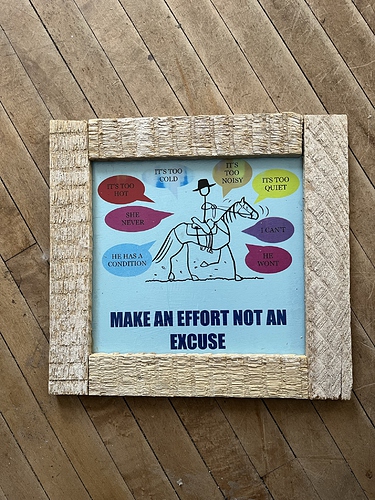Oh, I don’t think it’s simple at all. It sounds like the OP is teaching beginners and novices. I think they especially may not realize that there are things they could be doing off the horse to optimize their on-horse practice time.
Even as someone with >30 years of experience, including starting several horses myself, I’ve had to learn this recently. Even being fairly fit, my riding has moved forward a lot in the past year because I’ve been using the Dressage Rider Training program. I thought I was doing rider-specific exercises before, but this has been much more effective in improving my position and balance. I suspect that a program like this (which is 20 minutes 3x a week with minimal equipment) would pay huge dividends for someone who is horseless and only riding once a week in a lesson, but it might not even occur to them, or they might think it’s not worth it until they’ve advanced more, etc.
There is also just the aspect of digging in and working harder for many though. As I mentioned with the people who’ve lessoned with my instructor a time or two, they’ve specifically said “she’s good, but I don’t know if I want to work that hard!” And there are plenty of people who just aren’t going to prioritize focused schooling 5x a week, but rather maybe ride 2x a week just farting around and then wonder why they aren’t progressing. I honestly don’t care as long as people are happy with where they’re at, but do hope they will be realistic about the level of effort put in vs. goals, and of course the instruction has something to do with that (and the instructors hopefully are able to recognize when someone is putting in the work vs. phoning it in, and adjust accordingly). I’ve definitely been in the embrace the suck (the person I occasionally take jumping lessons from despairs, I’m sure), and it takes some effort to notice the tiny improvements and not start spiraling for sure.


 ) we practiced this starting at a standstill, then walk, trot & finally canter.
) we practiced this starting at a standstill, then walk, trot & finally canter.